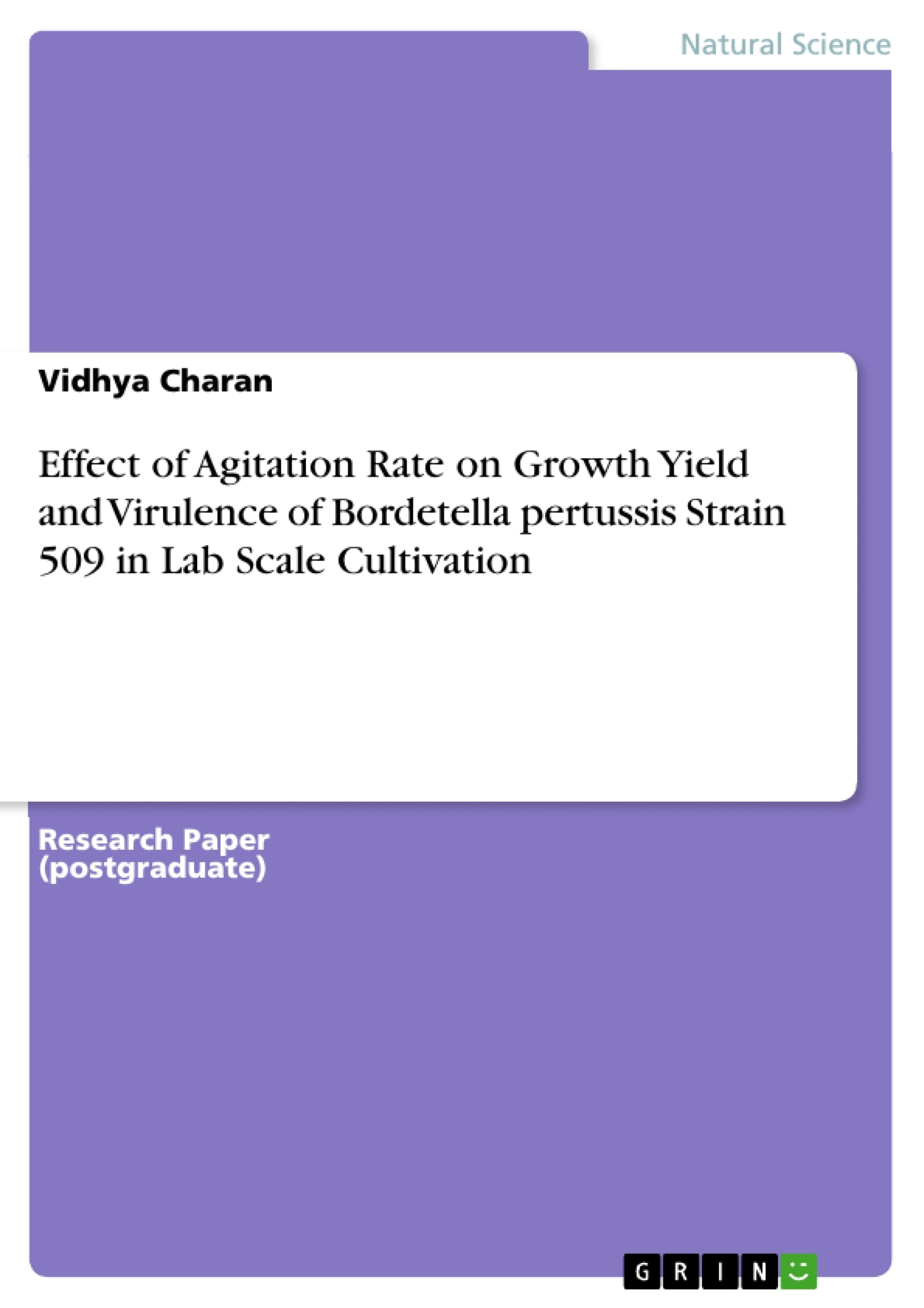In the present study, effect of agitation rate on growth yield and virulence property of Bordetella pertussis (BP) strain 509 during pilot scale cultivation was investigated. The results indicated significant decrease in growth yield on increasing the agitation rate due to shear stress of bacterial cells. To characterize the shear stress on bacterial cell protein FHA, cell lines such as Vero cells and CHO cells were used to check the adherence property. Finally the virulence property of vaccine culture was screened by Mouse Weight Gain Test (MWGT) and lymphocytosis promoting factor (LPF) test using LACA strains of laboratory mice weighing 14-16 grams. Comparatively more toxicity was observed on higher agitation rates than in optimal and lower agitation. It is evident that higher agitation causes shearing stress in cells inducing more toxicity than optimal agitation which in turn affects the quality of final vaccine.
Abstract
In the present study, effect of agitation rate on growth yield and virulence property of Bordetella pertussis (BP) strain 509 during pilot scale cultivation was investigated. The results indicated significant decrease in growth yield on increasing the agitation rate due to shear stress of bacterial cells. To characterize the shear stress on bacterial cell protein FHA, cell lines such as Vero cells and CHO cells were used to check the adherence property. Finally the virulence property of vaccine culture was screened by Mouse Weight Gain Test (MWGT) and lymphocytosis promoting factor (LPF) test using LACA strains of laboratory mice weighing 14-16 grams. Comparatively more toxicity was observed on higher agitation rates than in optimal and lower agitation. It is evident that higher agitation causes shearing stress in cells inducing more toxicity than optimal agitation which in turn affects the quality of final vaccine.
Keywords: Agitation rate, Borde t ella pertussis, Endotox in, To xicity .
© SJPH 2011, Received on: 25.12.2010; Revised on: 30.01.2011; Accepted on: 05.02.2011
Introduction
A vaccine is a biological preparation that establishes or improves immunity to a particular disease. Vaccines can be prophylactic or therapeutic. Whooping cough or pertussis is an infectious disease caused by Bordetella pertussis (BP). Pertussis was a major cause of childhood illness and infant death, in fact this disease affects mostly in infants than in adults. The WCPV as a component of the DTP vaccine has been shown to be very effective in protecting humans against B.P infection [1-2]. Bordetella is placed among the Gram-Negative aerobic rods and cocci called Coccobacillus [3]. In primary cultures, the cells are of uniform size and shape, but on sub culturing they may become longer and thread like structure. It is non- motile and non-sporing. Bordetella produces an array of toxins, aggressions and adhesions. B. pertussis and many of its products has been rigorously purified and characterized and assessed for their protective activity in experimental animals. The pathogenicity of Bordetella is difficult to define since, reliance has to be placed more on animal tests and invitro assays. Pertussis produces multiple antigenic and biologically active products, including pertussis toxin (PT), filamentous haemagglutinin (FHA), Endotoxin, leucocytosis promoting factor (LPF), agglutinogens, adenylate cyclase, pertactin and tracheal cytotoxin (TCT) [4].The endotoxin of pertussis is referred to as lipopolysaccharide (LPS) play important role in bacterial pathogenesis. LPS of B. pertussis has toxic activity similar to those of LPS from other Gram-negative bacteria [5-6-7].
Material and Methods
All chemicals and solvents used in this experiment were of analytical grade obtained from Himedia, Mumbai.
Preparat ion of Media
Bordetella pertussis strain 509, used in present study, was obtained from the Pasteur Institute of India; Coonoor, India. The working volume of lab scale fermentor (Amar Seed Fermentor, Mumbai) was 20 liters. The required volume of Bordet Gengou (BG) solid media and B2 liquid media are prepared using standard WHO protocol and checked for purity and sterility. The grown colonies of seed strain 509 from slopes of BG medium were scrapped and inoculated into fresh 1 liter B2 medium individually. These flasks were loaded on the seed shaker for 24 hours at 350C. After 24 hours, determination of opacity and pH along with staining were done.
[...]
- Quote paper
- Vidhya Charan (Author), 2011, Effect of Agitation Rate on Growth Yield and Virulence of Bordetella pertussis Strain 509 in Lab Scale Cultivation , Munich, GRIN Verlag, https://www.grin.com/document/176400




